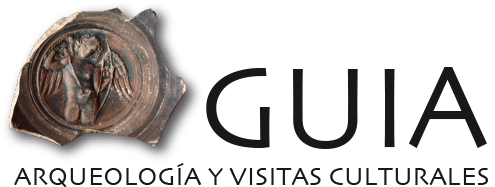Learn about Tarifa ‘the most Moorish city in Andalusia’, as Richard Ford said in the 19th Century, and a few kilometres away the characteristic Roman town, Baelo Claudia. Both situated in a magical place, a crossroads between Europe and Africa, bordering both the Mediterranean Sea and the Atlantic Ocean, with a beautiful coastline and well preserved landscape combined with a climate that gives it fame and character.
Tarifa
As well as its spectacular landscapes, the whole area exhibits a rich cultural heritage, with important prehistoric cave paintings, dolmens and the necropolis of Los Algarbes, which boasts an impressive collection of tombs excavated in the rock, dating back to the Copper and Bronze Ages.
Tarifa, a designated Conservation Area, has a long past that has left us a varied legacy. On high ground next to the sea, it had settlements in the Bronze Age, Phoenician and Roman times, ultimately leading to the construction now known as the castle of Guzmán el Bueno. This castle was built by order of Caliph Abd al – Rahman III in 960 d. C., according to the marble inscription still in its original position. It was shortly after the Christian conquest by King Sancho IV El Bravo, in 1292, when the event which gave name to the castle and fame to Tarifa occurred: the heroic act of Guzmán El Bueno, entrusted by the king to hold the castle, who preferred to sacrifice his son rather than surrender the castle to the Muslims.
Each historical phase marks the current appearance of the castle. Since its original construction there has been a regular build up of defences (layered doors, large towers, outer walls and protected pathways) and during the Christian period additional palatial structures. The walls surrounding the town were raised in three distinct phases during the Muslim period. Most parts are still in view with notable elements such as the gate of the Almedina through the oldest wall and the Jerez Gate. The hill of St. Catalina and the Island of Tarifa also have defences. The layout of the town streets and many of the houses preserve traces of its history. Tarifa also has several churches: the main church of St. Matthew, in Late Gothic style with a Neo-classical facade; the church of St. Francis, and two unused Gothic-Mudejar buildings, the church of St. James and the recently restored church of St. Mary which contains visible Roman structures.
Dominating the cove of Bolonia and its famous beach is the Roman town of Baelo Claudia, in which we can contemplate all the defining elements of a Roman settlement. We start at the Visitor’s Centre and walk the path to the town passing part of an aqueduct that supplied it with fresh water. We then see the wall that surrounds the town, outside which is a large necropolis. We enter through the East Gate (Carteia Gate) at one end of the decumanus maximus or main street and walk on impressive Tarifa stone slab floors which run from East to West. South of this street, next to the beach there are several cetariae or salted fish and garum factories. The town exists because of this industry.
The square Forum was at the centre of public life, with several buildings around it such as the Basilica. In the high town area is the well-preserved theatre and close-by we can better appreciate the area of worship which overlooks the Forum. Here are the temples dedicated to the Capitoline Triad (Jupiter, Juno and Minerva) and alongside them another temple dedicated to the mysterious cult of the Egyptian goddess Isis, which is the best preserved in Roman Spain.
If you enjoy eating fish, especially tuna, Tarifa is the town for you.




